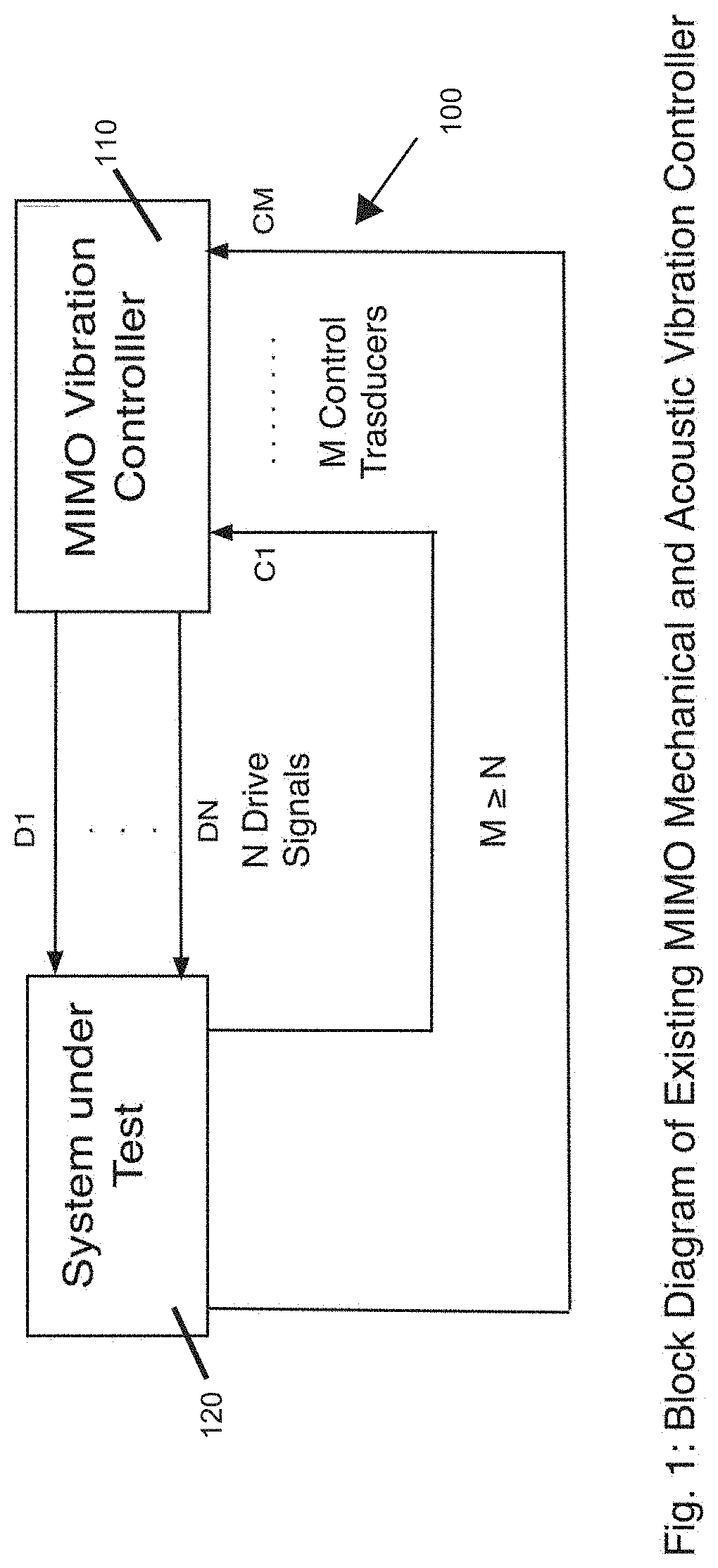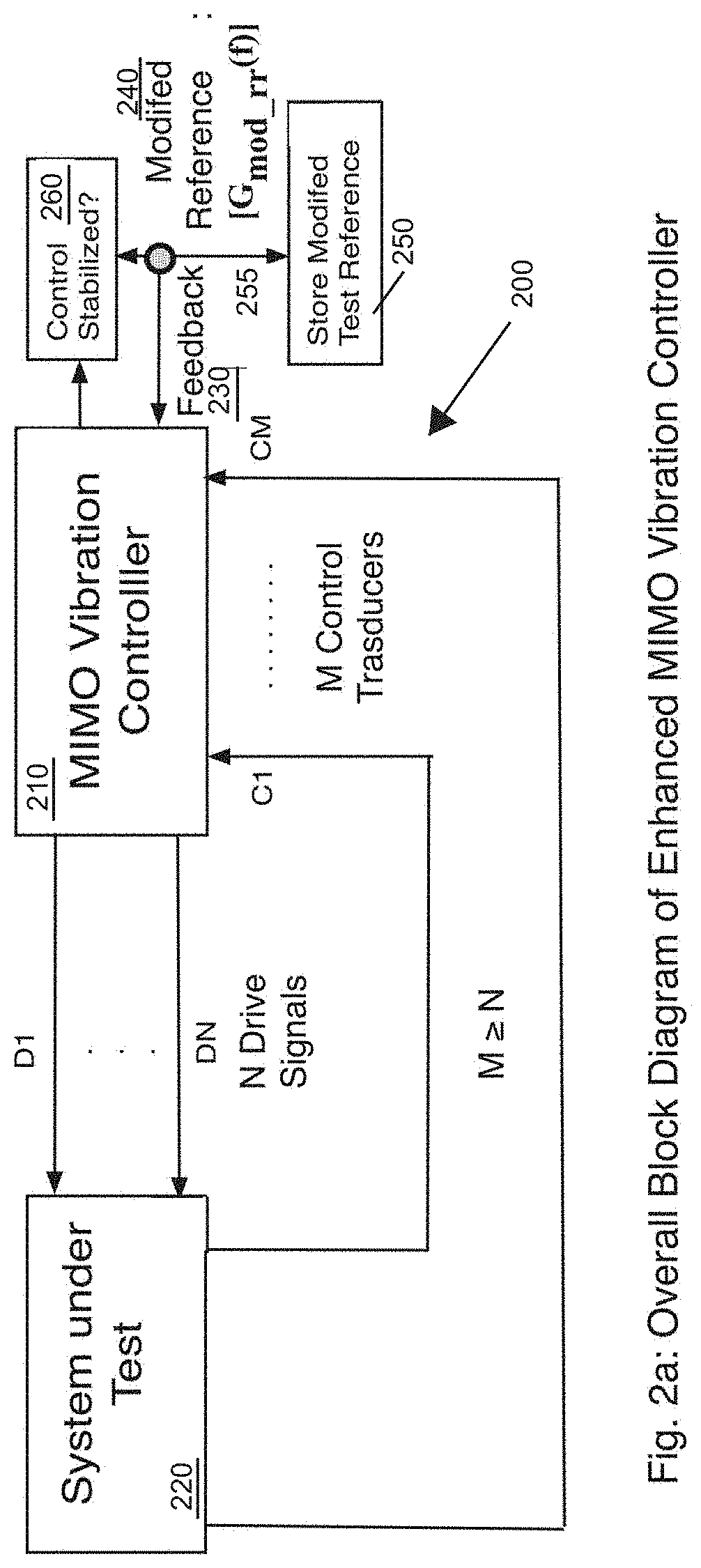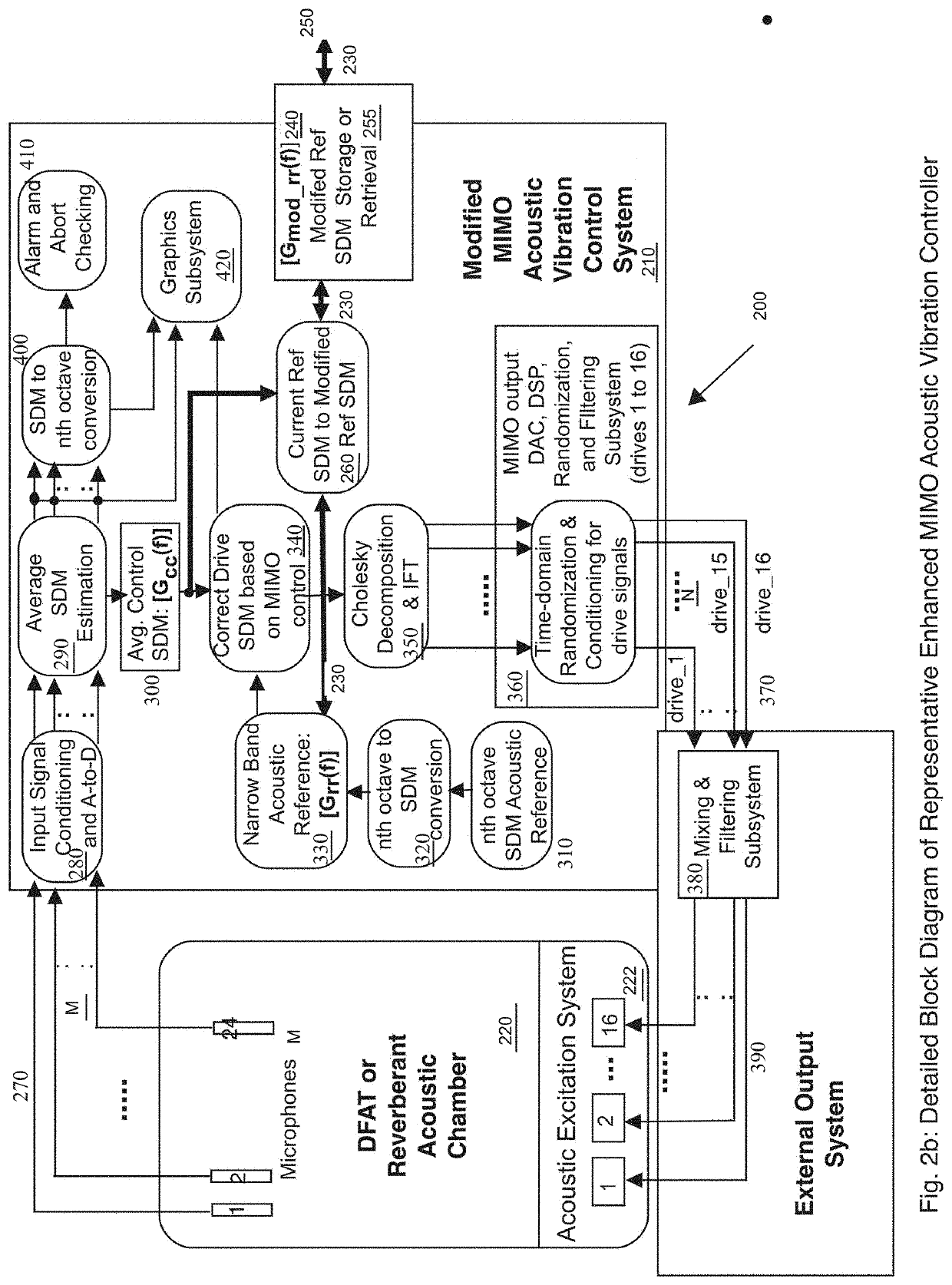High intensity vibration testing using an empirically modified reference specification and method thereof
a high-intensity vibration and reference specification technology, applied in vibration testing, structural/machine measurement, measurement devices, etc., can solve problems such as self-limiting of components of the test system, potential damage to system components or test articles, and ignore real-world constraints, so as to reduce the risk of damage, less risk of damage, and increase the coherence
- Summary
- Abstract
- Description
- Claims
- Application Information
AI Technical Summary
Benefits of technology
Problems solved by technology
Method used
Image
Examples
Embodiment Construction
[0049]Embodiments hereof are now described with reference to the Figures where like reference characters / numbers indicate identical or functionally similar elements. While specific configurations and arrangements are discussed, it should be understood that this is done for illustrative purposes only. A person with ordinary skill in the relevant art will recognize that other configurations and arrangements can be used without departing from the spirit and scope of the invention.
[0050]Referring to FIG. 2a and FIG. 3, a simplified block diagram of an enhanced MIMO vibration testing system 200 in accordance with one embodiment of the present invention is shown. Referring to FIG. 2a, the MIMO vibration testing system 200 includes a conventional MIMO Vibration Controller 210, a System Under Test 220, a control feedback loop 230, computing means for developing a modified or updated reference specification 240, and storage means for storing the modified or updated reference specification 25...
PUM
 Login to View More
Login to View More Abstract
Description
Claims
Application Information
 Login to View More
Login to View More - R&D
- Intellectual Property
- Life Sciences
- Materials
- Tech Scout
- Unparalleled Data Quality
- Higher Quality Content
- 60% Fewer Hallucinations
Browse by: Latest US Patents, China's latest patents, Technical Efficacy Thesaurus, Application Domain, Technology Topic, Popular Technical Reports.
© 2025 PatSnap. All rights reserved.Legal|Privacy policy|Modern Slavery Act Transparency Statement|Sitemap|About US| Contact US: help@patsnap.com



